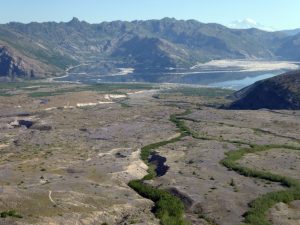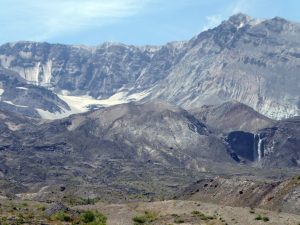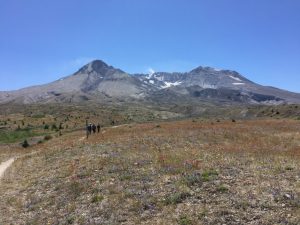
Alongside getting to conduct research at Mount St Helens, our team has the opportunity to explore the beautiful landscape of the Pumice Plain.
The Pumice Plain is a 20 km2 region, essentially devoid of life in 1980, but slowly being colonized by a riparian willows and alders.

Five new watersheds have formed on the Pumice Plain of MSH since 1980, each receiving water from different sources (springs, groundwater, snowmelt, glaciers). Crater Glacier is one of the only glaciers in the lower 48 to be actually growing!

Landscape scale patterns across watersheds at MSH have allowed us to explore environmental differences across watersheds that don’t vary in age, parent material, slope, or aspect on the sterile and relatively homogeneous Pumice Plain, that 40 years later, is bursting with life!